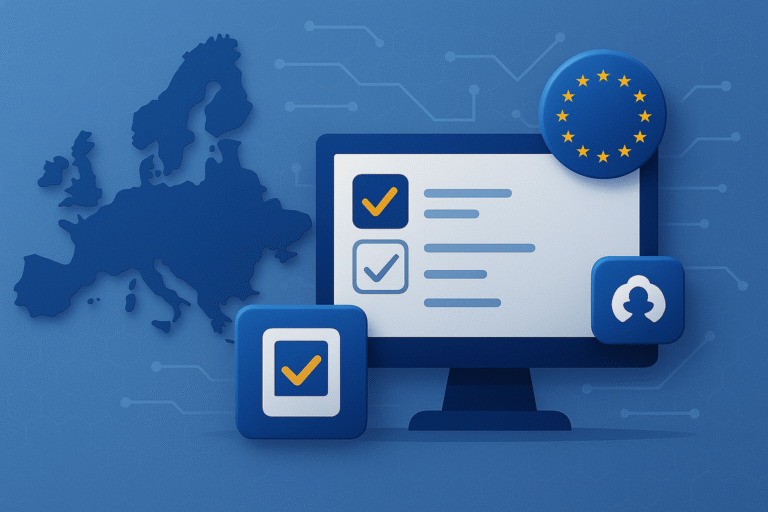
Introduction
In the era of digital democracy, tools like digital identity and electronic signatures have become essential to ensure secure, inclusive, and transparent participatory processes. From accessing public services to secure online voting, these instruments provide the technological foundation for recognizing citizens and enabling them to exercise their digital rights.
As participatory platforms expand, robust and certified systems are required to balance security, privacy, and usability.
👉 For broader context, see also:
- What is digital democracy and why it matters today
- Checklist for organizing a secure online vote
- AI and public decisions: opportunities and risks
What is Digital Identity?
A digital identity is the collection of electronic information that uniquely identifies a person online. It can include:
- credentials (username, password, PIN);
- multi-factor authentication (OTP, apps, biometrics);
- digital certificates issued by trusted authorities.
In the EU, digital identity is regulated by the eIDAS Regulation, which harmonizes identification and trust services across Member States, allowing citizens to use a single identity to access services throughout Europe.
Digital Identity Systems in Europe
SPID and CIE in Italy
- SPID (Public Digital Identity System): provides access with a single set of credentials to public services and private entities.
- CIE (Electronic Identity Card): includes a chip and PIN, enabling strong authentication and qualified electronic signatures.
👉 More info: AgID – SPID
eIDAS and the upcoming EUDI Wallet
The eIDAS Regulation laid the groundwork for interoperability. The next step is the European Digital Identity Wallet (EUDI Wallet), which will allow EU citizens to:
- access public and private services across the Union,
- store certificates (diplomas, driver’s license, tax documents),
- digitally sign documents with cross-border validity.
👉 See also: European policies for digital citizenship — Official page: EUDI Wallet
Types of Electronic Signatures
According to eIDAS, there are three main levels:
- Simple electronic signature
Such as a click or entering credentials; low security and easily contested. - Advanced electronic signature (AES)
Uniquely linked to the signer, ensures document integrity. - Qualified electronic signature (QES)
Based on certificates issued by accredited providers; has the same legal value as a handwritten signature.
Applications in Participatory Practices
Online Voting
To ensure legitimacy, e-voting platforms integrate strong authentication and, where required, electronic signatures to certify the vote.
👉 For practical guidelines: Checklist for organizing a secure online vote
Public Consultations
Electronic signatures certify contributions, ensuring they come from legitimate participants.
Legislative Proposals and Deliberations
In citizens’ forums and online assemblies, digital identity confirms legitimacy and signatures give legal weight to decisions.
👉 See also: Citizens’ forums and public deliberation: concrete examples
Benefits for Digital Democracy
- Transparency: every act is traceable and verifiable.
- Security: reduces fraud and unauthorized access.
- Inclusion: uniform access to digital services.
- Interoperability: one identity across Europe.
- Legitimacy: strengthens trust in online processes.
Challenges and Risks
- Accessibility: not all citizens are familiar with SPID, CIE, or digital signatures.
- Data protection: privacy by design and data minimization are essential.
- Provider dependency: concentration risk in identity service providers.
- Digital divide: citizens lacking tools may be excluded.
👉 Related read: 10 best practices for inclusive participatory processes
Concrete Examples
- Estonia: pioneer in national online voting using digital ID.
- Italy: increasing use of SPID and CIE for consultations and service access.
- EU: pilot projects for the EUDI Wallet to manage documents and cross-border access.
👉 Learn more: Estonia and online voting: a model to study
Conclusion
Digital identity and electronic signatures are key enablers of secure, inclusive, and legally recognized participatory processes. The challenge is to balance technology, rights, and inclusion, ensuring no one is left behind in Europe’s digital citizenship.
If properly implemented, they can become the backbone of a more transparent and participatory democracy.
External Sources
- eIDAS Regulation – European Commission
- EUDI Wallet – European Digital Identity
- OECD – Innovative Citizen Participation


